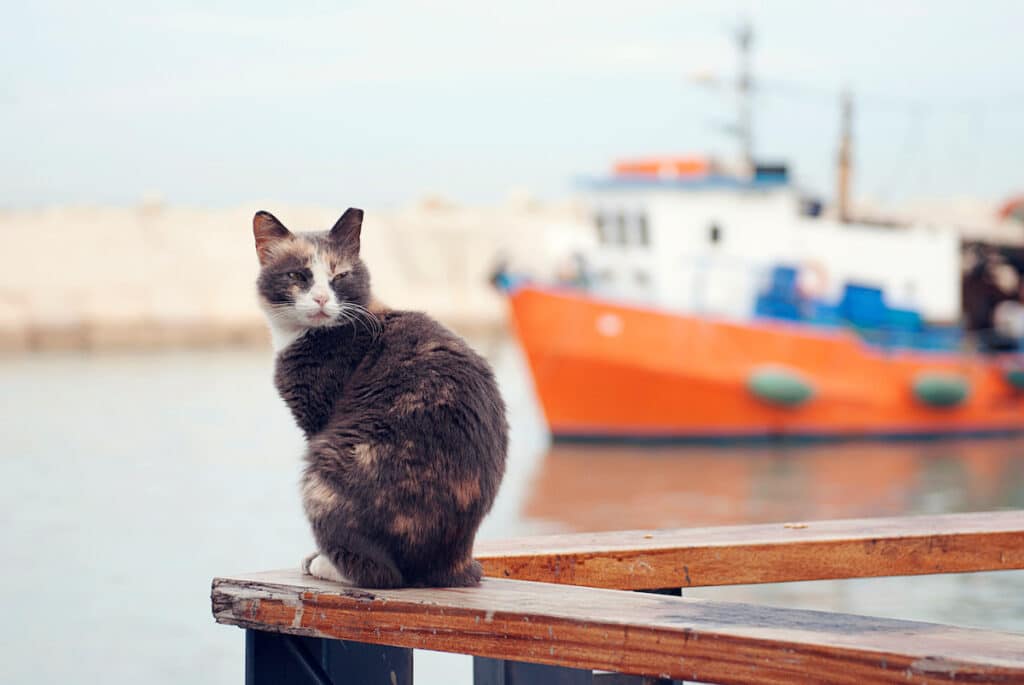The most obvious response when considering where cats came from may seem to be “another planet,” however, they are actually from our earth. It’s possible to assume that cats’ history is as convoluted as they are, but in reality, it’s a rather simple tale.
How Cats Became Domesticated
Here, the solution is deceptively straightforward. Cats choose domestication, which is extremely typical of cats. According to researchers, when humans first began farming thousands of years ago, cats found their farms had easy prey. Rodents were drawn to fields of grain, and the cats were drawn to the rodents. Cats just started hanging around since it was an easy food, and people accepted them because they were helping farmers out greatly. The ranges of these domestic cats also grew as agricultural trade increased. They essentially followed the food. In short, cats came from the earliest farming communities in the Fertile Crescent around Egypt.
How did cats get to the United States?
Cats are thought to have traveled to distant parts of the world through ships. Ship cats protected food supplies because they were excellent at catching rodents. Cats are known to have originated in port cities and then expanded from there into more agriculturally developed areas, according to research.
Therefore, most ships had at least one cat on board. In fact, the captain’s cat was a coveted feline, and given respect by the passengers and workers.
Maine Coons are a great example of a breed that came from ship cats. They’re thought to have sailed the seas from northern Europe, which explains their long hair, and landed off the coast of New England. From there, they bred with the local cats, making the Maine Coon we know today.
Did cats come from lions?
That is not true. Felis silvestris lybica (also known as the African Wildcat), which is still widespread in Africa, southwest and central Asia, India, China, and Mongolia, is the ancestor of all domestic cats. Although the African wildcat sounds intimidating, it actually resembles a domestic cat, although one that is slightly larger.
Claudio Ottoni, a researcher who has been studying domesticated cats’ DNA, discovered that all house cats are descended from this common ancestor in 2017. Two periods saw the domestication of cats: first, during the Neolithic era in the Fertile Crescent, and subsequently, during the Classical era, when it accelerated in Egypt.
Around 4400 B.C.E., this first lineage moved southwest from Asia into Europe from its origins in the Fertile Crescent. Around 1500 B.C.E., the second period in Egypt began to spread from the Mediterranean into the Old World.
Where did specific cat breeds come from?
It should come as no surprise that it took a long time for cats to decide to become sufficiently domesticated so that people could actually engage in selective breeding. “Fancy breeds” didn’t exist until the nineteenth century. Prior to that, domestic cats’ genes had hardly changed at all from those of their relatives, the African wildcats, with the exception of the tabby cat’s coat patterns. Tabby markings first appeared in DNA under the Ottoman Empire, but it wasn’t until the 18th century that they were sufficiently noticeable to encourage breeding for coat patterns.
Few genetically significant differences existed before contemporary times, when cat fanciers developed breeds like the Persian and Abyssinian, because selective breeding of cats is such a young phenomenon in the history of feline genetics. Just over 40 cat “breeds” are currently recognized by the fancy cat community, with 80% of them being less than 100 years old (genetics-wise). every other feline? Their genetic makeup is still quite similar to that of that common ancestor.
According to a 2008 study published in the journal Genomics, “The pedigreed (purebred) cats, which were bred to maintain or alter exclusively aesthetic features, are the small subgroup of domestic cats that have undergone extensive artificial selection.” 16 “natural breeds” are believed to represent local variations that predate the cat fancy out of the 41 breeds recognized by the Cat Fanciers’ Association (CFA). The remaining breeds are typically characterized as straightforward, single-gene variants that are descended from the natural breeds that were produced during the previous 50 years. The majority of other domesticated species, in contrast, have gone through millennia of rigorous selection for sophisticated behavioral, performance, or production qualities involving complicated gene interactions.”
How do I tell where my cat came from?
You won’t learn much about your cat from a DNA test, as you may have inferred from the foregoing description. We’ve looked into feline DNA testing a little, and in addition to the fact that the tests don’t reveal much, this field of research is also quite young. It could be worth waiting until the research is a little more developed if you really want to know every single nuance of your cat’s DNA.
The main distinction between domestic and wild cats is that one opted to live in a non-solitary environment near humans, while the other chose to live in a solitary environment in the wild.
Eva-Maria Geigl, an evolutionary geneticist and co-author of Ottoni’s 2017 cat study, emphasizes the very different historical domestication processes that dogs and cats underwent. Dogs were domesticated to perform particular tasks, which is what gave rise to the diversity of dog breeds we have today. According to Geigl, “I don’t think that there was any need to put cats to such a selection procedure when it was not required to transform them.” They were ideal in their current state.














